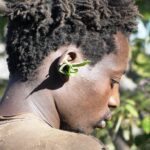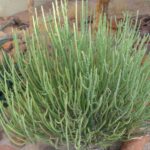Baboons are one of the largest-sized Old-World monkeys. Due to hybridization, their taxonomy is contested and overlapping. In Africa there are six species of baboons, and in Southern Africa lives one species, which is Chacma baboons (Papio ursinus). Chacma baboons can be further divided into three subspecies.
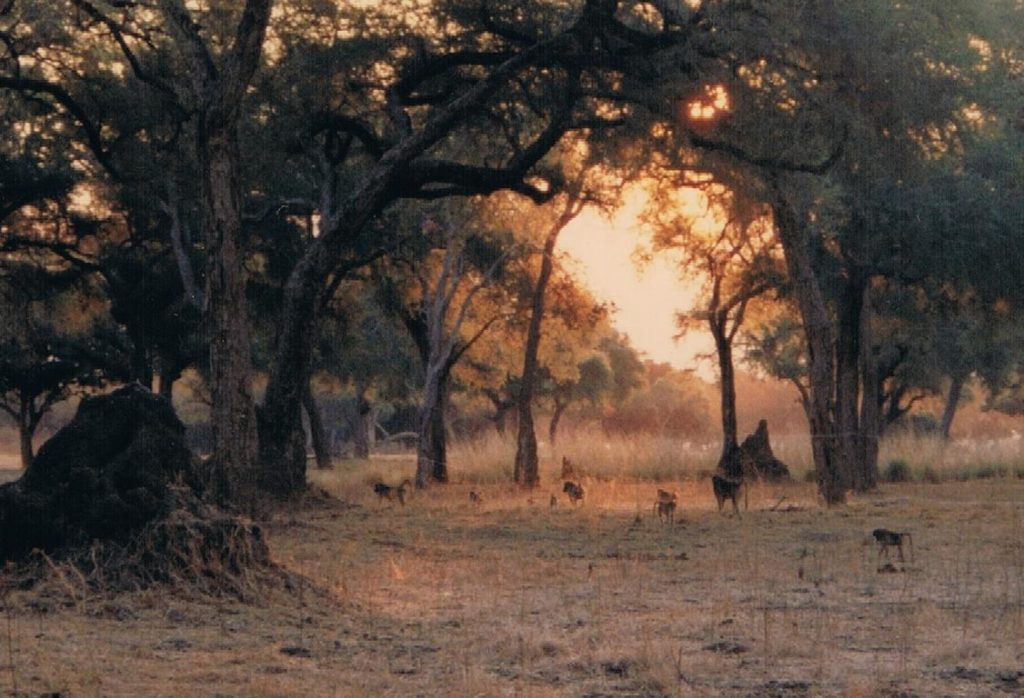
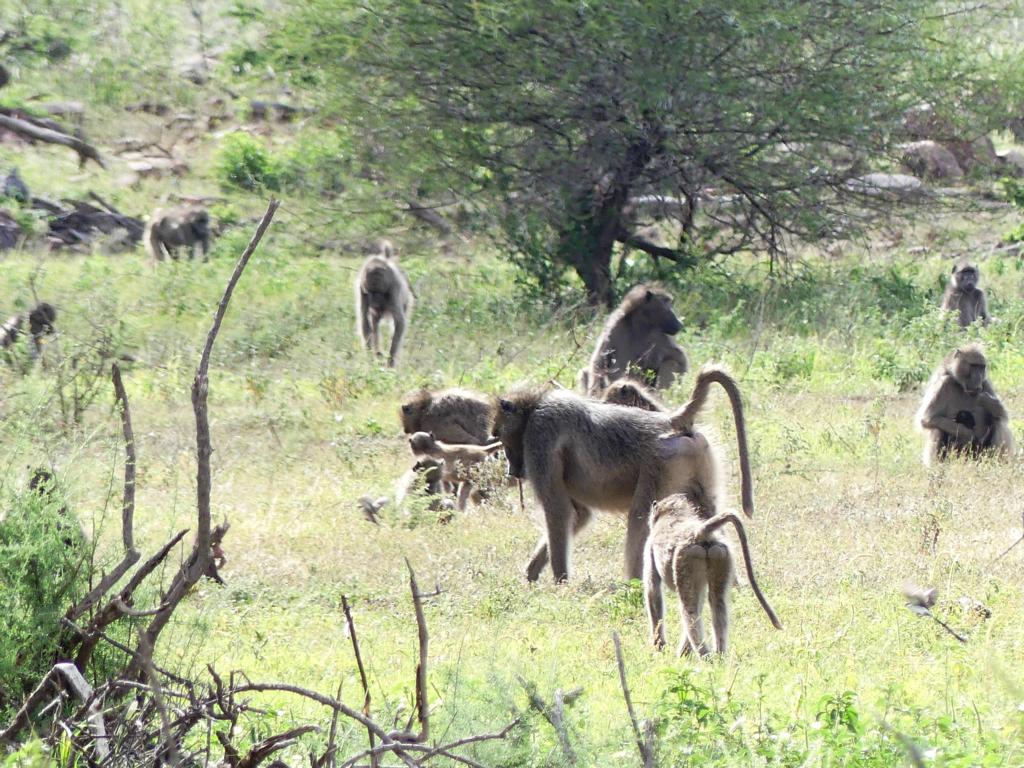
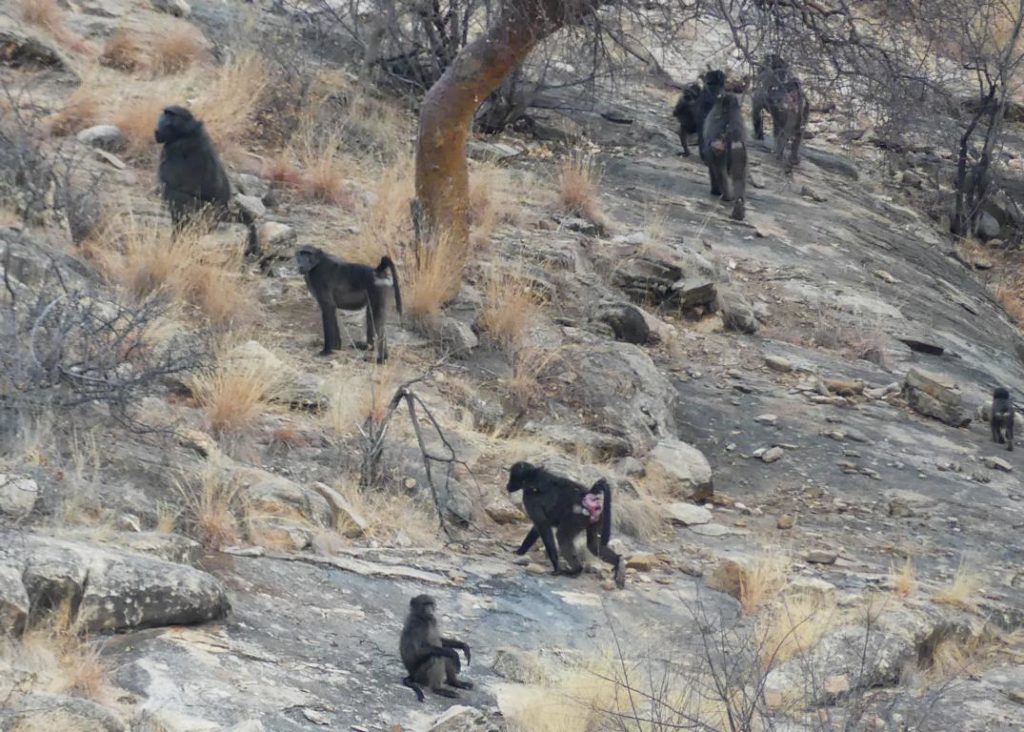
In general, baboons grow larger and are of a darker color in difficult living environments. Due to lack of food and water, Chacma baboons for example are considerably larger and dark brown in Namibia (subspecies P. ursinus ruacana). Whereas in the South African Lowveld (e.g.: Kruger NP), they grow smaller and are greyish (subspecies P. ursinus ursinus). At Mana Pools in Zimbabwe, they have longer legs and a darker head (subspecies P. ursinus griseipes). All these are adaptions to specific environments.
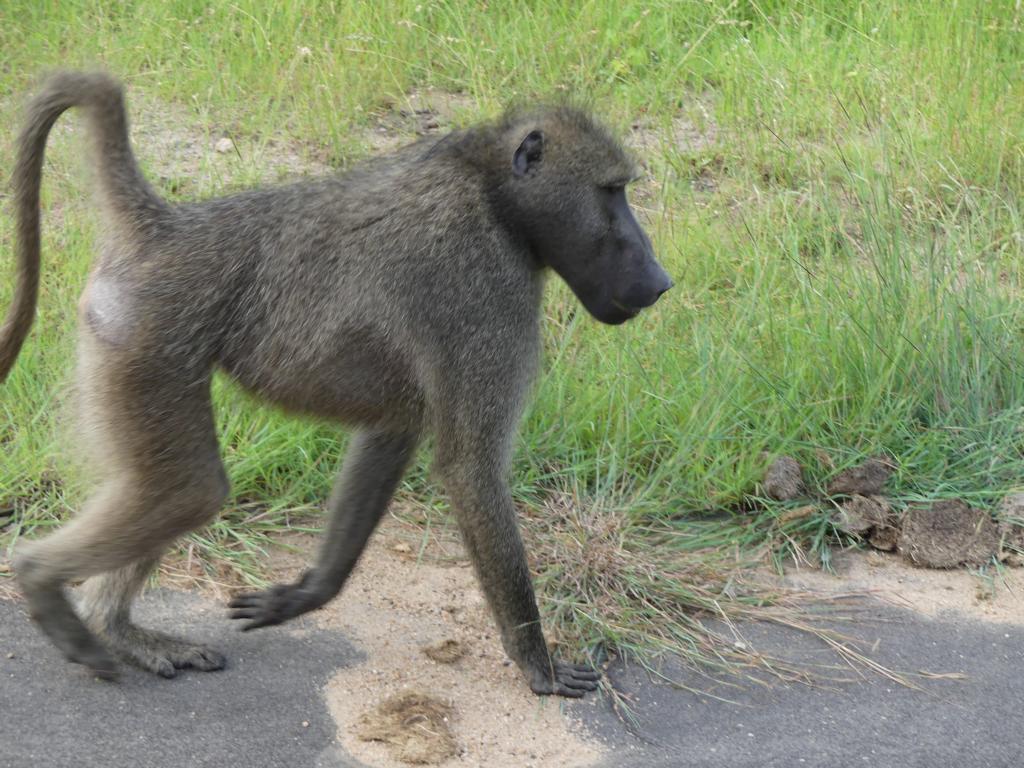
Wild baboons are wary of people. They know instinctively that humans can harm them from a distance. At Sterkfontein caves (‘Cradle of Mankind’) in South Africa, a 2-million-year-old partial cranium of a baboon was found next to ‘Mrs. Ples’, an Australopithecus africanus. Even if Homo sapiens are only around for about 200,00 years now, it was enough time for wild animals to imprint an instinctive fear of humans.
Baboons becoming a nuisance
But Chacma baboons are very intelligent and opportunistic. As soon as they get habituated to people, troubles will evolve. Especially if these people are feeding them and baboons start combining people with free food. And if humans are making another mistake by feeding baboon females and cute youngsters first, still more problems will evolve. In this male-centric oligarchic society, males will get a testosterone-powered kick, if they see that lower-ranked animals are getting fed first. And will aggressively demand their perceived right.
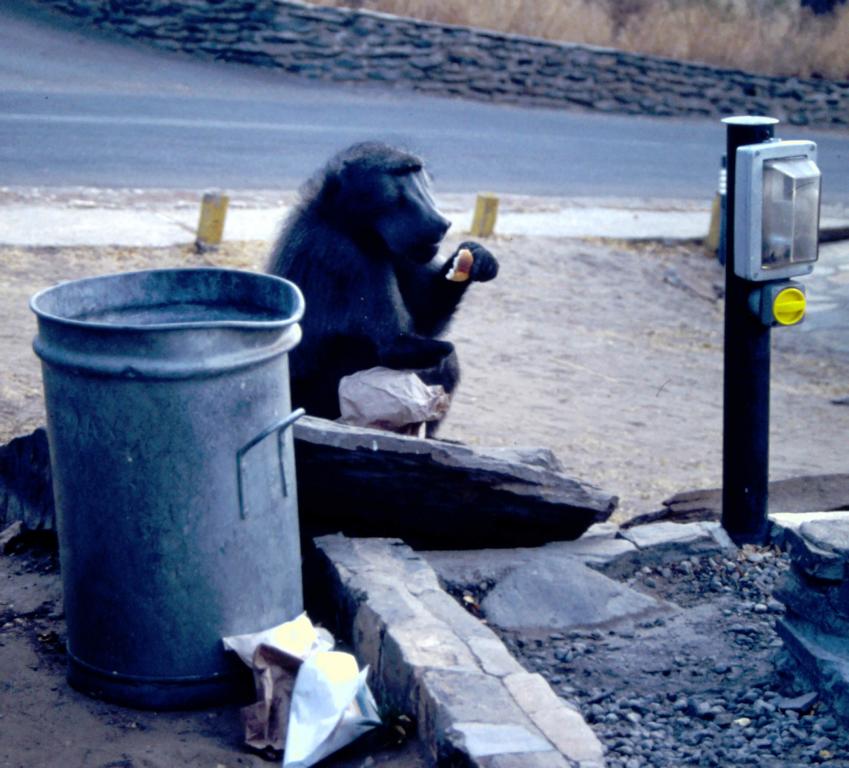
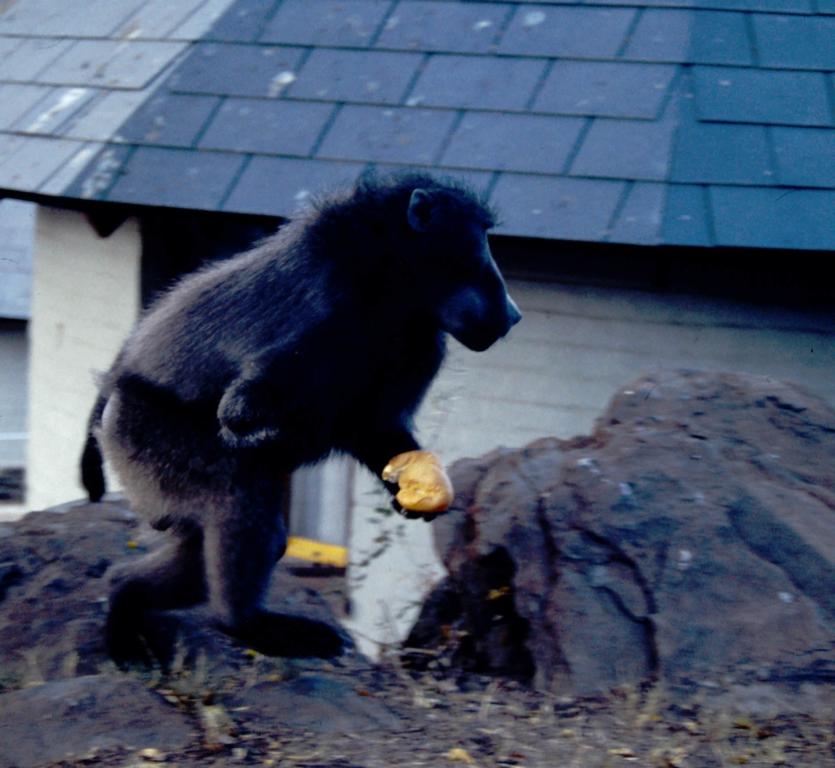
Due to the strength and cleverness of baboons, they will be able to manipulate doors and windows and become a nuisance. They are also able to distinguish between human males and females and will try to scare females first. If that happens, these troubles will often be ended to the detriment of baboons.
Baboons also eat toxic plants
In the wild, intelligence, opportunism, and group memory help them to survive harsh environments. In Namibia for example, three groups of Chacma baboons live in the Kuiseb (dry river) valley. When there are severe droughts, there will be no open water sources available to these baboons anymore. But they are eating parts of poisonous plants after processing them. As Hamilton (1986) reported, baboons harvest e.g., spiny arms of poisonous Euphorbia avas-montana plants, bite off the spines, peel back the green skin, and masticate the fibrous core for water. Hamilton tested himself a small piece of such core, which produced in his mouth a strong burning sensation and subsequent illness.
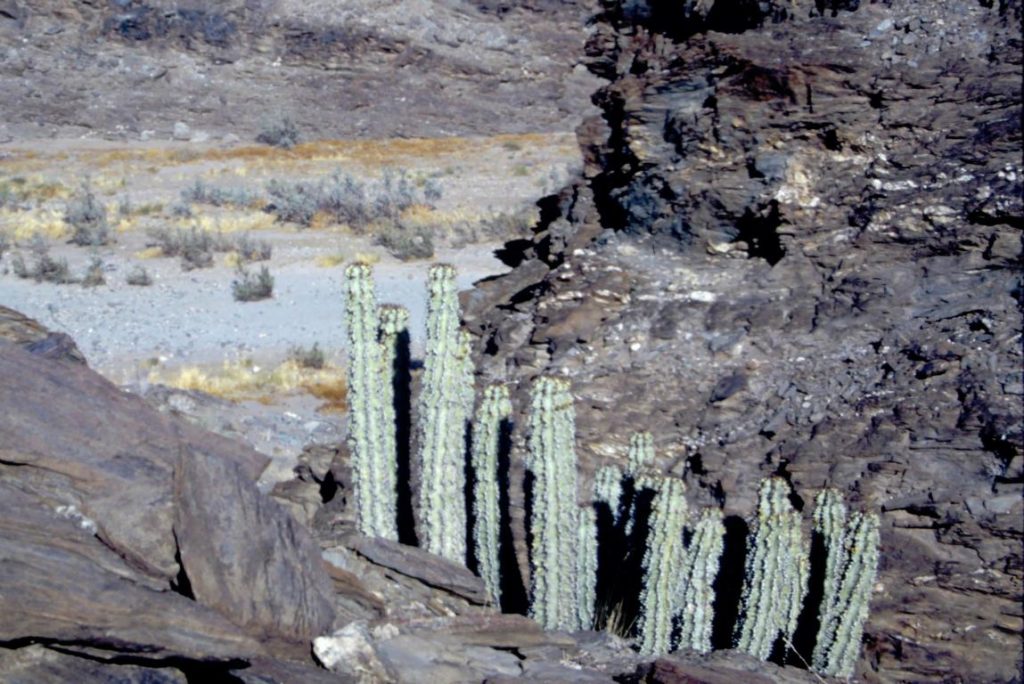
Two things can be learned from this example:
- Not everything that baboons can eat; humans or other mammals can eat. That’s a survival paradigm in Southern Africa: ‘You can eat whatever Vervet monkeys eat, but NOT what baboons eat.’
- Although the same Chacma baboon group only ate toxic plants at least five years apart, they were able to remember these possibilities for survival via group memory.
We already described earlier that Chacma baboons will often become dangerous to people if they are fed by them. But there are also behaviors of non-habituated baboons, which are scary to man. Let me explain two personal experiences of such behaviors.
Kuiseb canyon experience
Once I got one of my regular urges to sleep out in nature. I therefore drove from Windhoek to the border of the Namib-Naukluft National Park in Namibia. There, I parked the car and walked with my backpack along the Kuiseb River Canyon about 3 km deep into the park. It was already getting dark, and I found a small spot about 10 meters above the river sand at the foot of a sheer cliff. About 30 meters away was a well in the sand, dug by animals and contaminated by baboon droppings. After collecting a small amount of firewood, a kind of throwing stick, and two fist-sized stones for protection against spotted hyenas, I settled down.
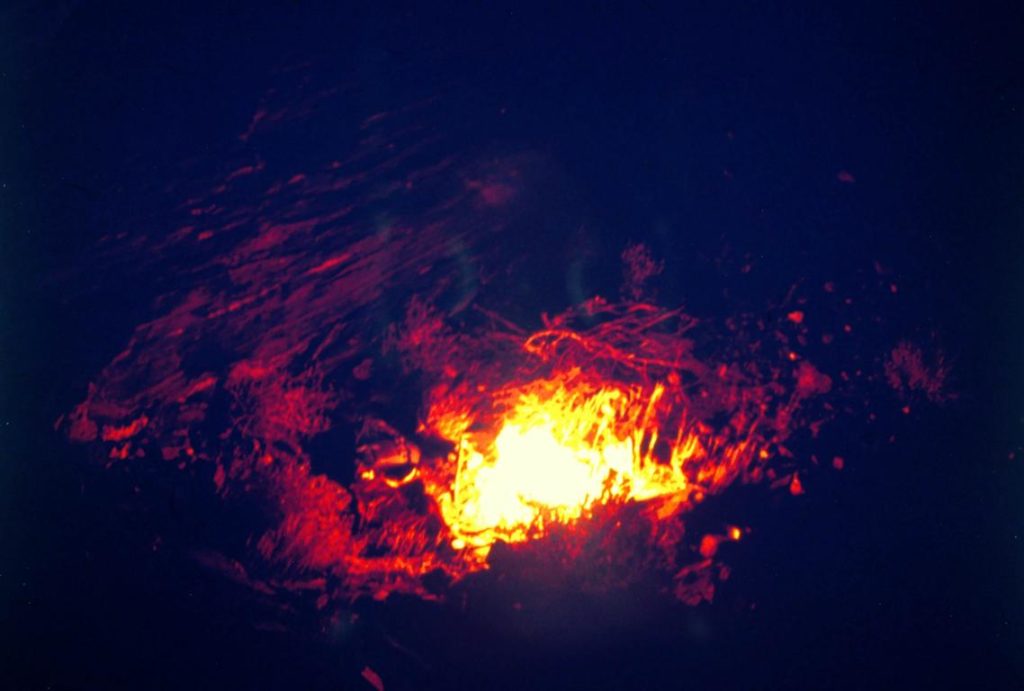
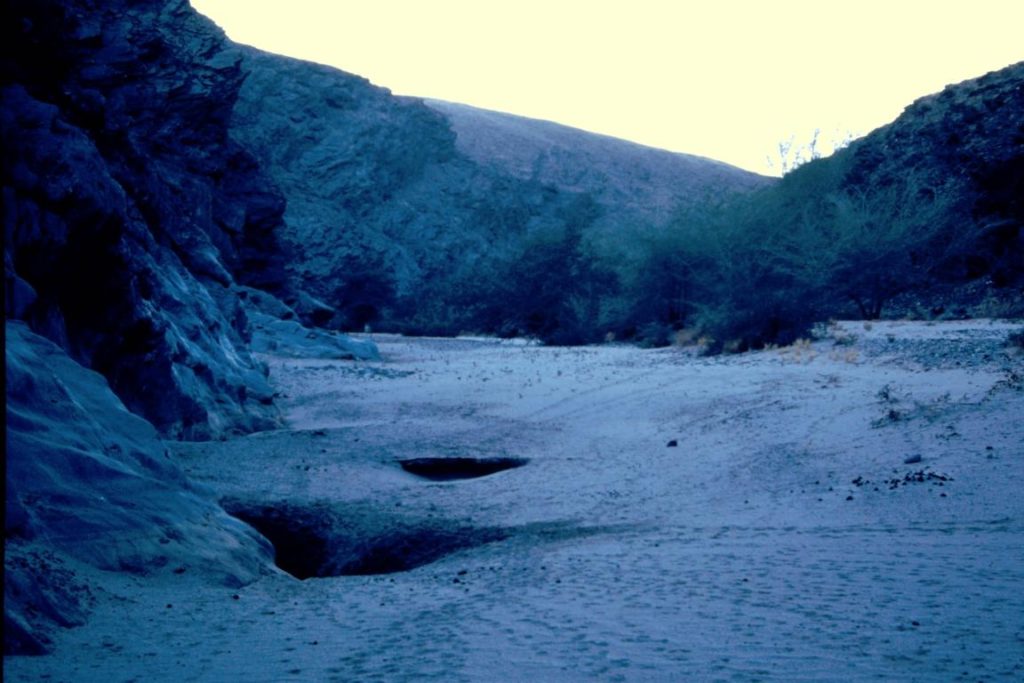
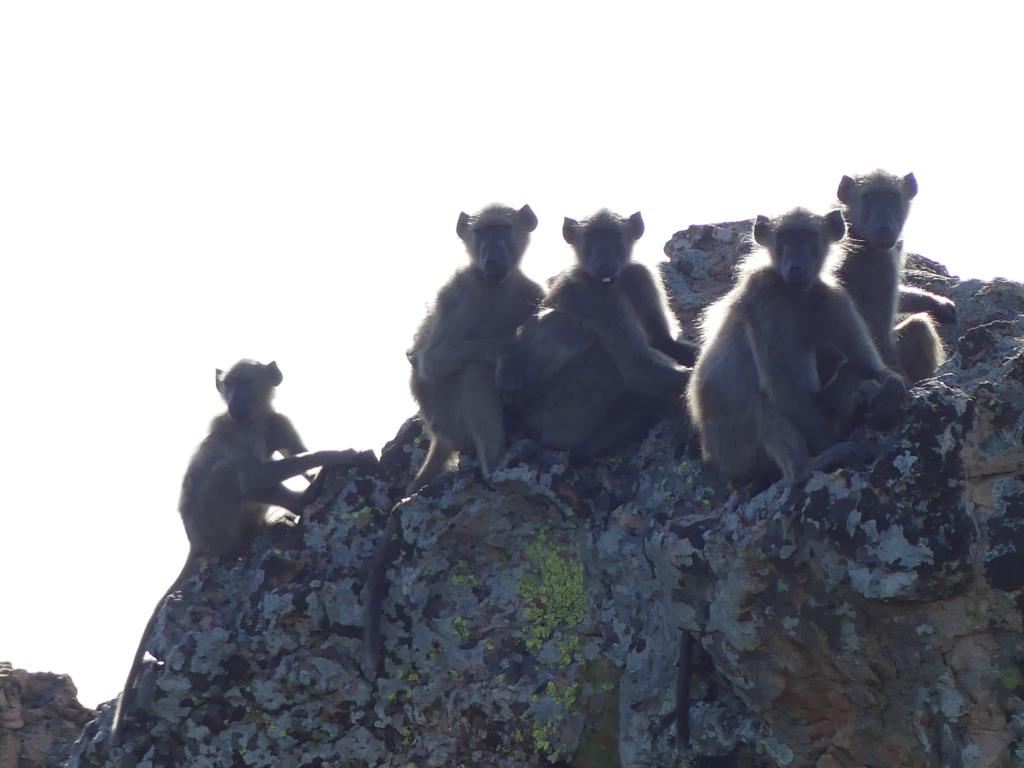
It was getting dark, and the fire was burning. Suddenly, Chacma baboons started a noisy ruckus above me. A big troop of them was moving about 15 meters above my sleeping location back and forth on top of the cliff. And they were shouting aggressively at me. First, I thought they spotted a leopard. But could not smell one. Then, it became clear to me: I was camping at their sleeping place and was furthermore located between them and their water source. Some males came closer and shouted aggressively at me and I was alone with no protection. So, I got really scared, packed up my meager belongings, and hiked along the riverbed back to my car. Where I spent an uncomfortable remaining night. But at least I was protected there.
Summary of the Kuiseb canyon experience
This was an outright stupid and un-lawful behavior on my side. Not only was I walking and hiking offside any trail in a National Park during nighttime, but I also exposed myself to grave danger. The only excuse was that I was still young. But the experience for me was valuable: Never put up camp at a baboon’s sleeping place. And never camp near waterholes. And anyway, no walking around in a NP in Southern Africa during nighttime.
Suikerbosrand experience
My two young daughters were ‘Brownies’ – that’s the section of 7-10-year-old Girl Scouts. They had to prepare a big poster showing actual droppings of plains game, like Kudu, Impala, Steenbuck, and such. On a Saturday morning, we said goodbye to Mom and drove to Suikerbosrand Nature Reserve south of Johannesburg in South Africa to collect a variety of these feces. There, we were fully immersed in finding different droppings and were far away from our car or other people. And initially did not see that a big troop of Chacma baboons were shadowing us. They were still in our comfort zone.
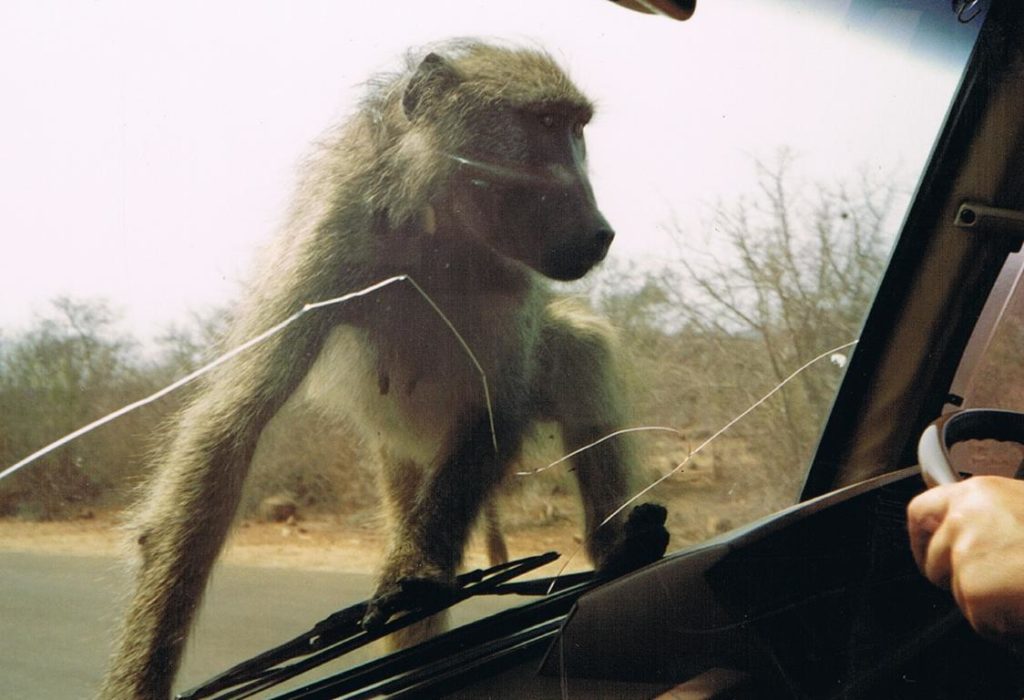
Suddenly I got a bad feeling and saw this troop of baboons uncomfortably close. They were intensively watching us and the distance to them was now significantly closer – they were now in my alert zone. Immediately I was packing up the kids, kept them close to me and we went into a straight line towards the car. I tried to keep myself in between the two kids and the baboons, and they moved in closer and closer. Finally, they were clearly in my warning zone, and I was on high alert. Because my two youngsters were the target of this troop, and I did not have a defensive weapon with me. But luckily, we reached the car when they were still about 10 meters apart. They were now in our ‘fight-or-flight-zone’ and we chose the flight. We jumped into the car and off we went.
Summary of the Suikerbosrand experience
This was a scary experience. Instead of feeding on young antelopes, this troop was intending to feed on young humans. Suikerbosrand at that time did not have large predators, baboon numbers were soaring, territory extension was not possible due to human habitation and feed for them was scarce. On this occasion, it became clear to me that Chacma baboons are considerably more dangerous than generally expected. From this experience onwards, I always scanned the area carefully for them and treated them with high alert and respect.
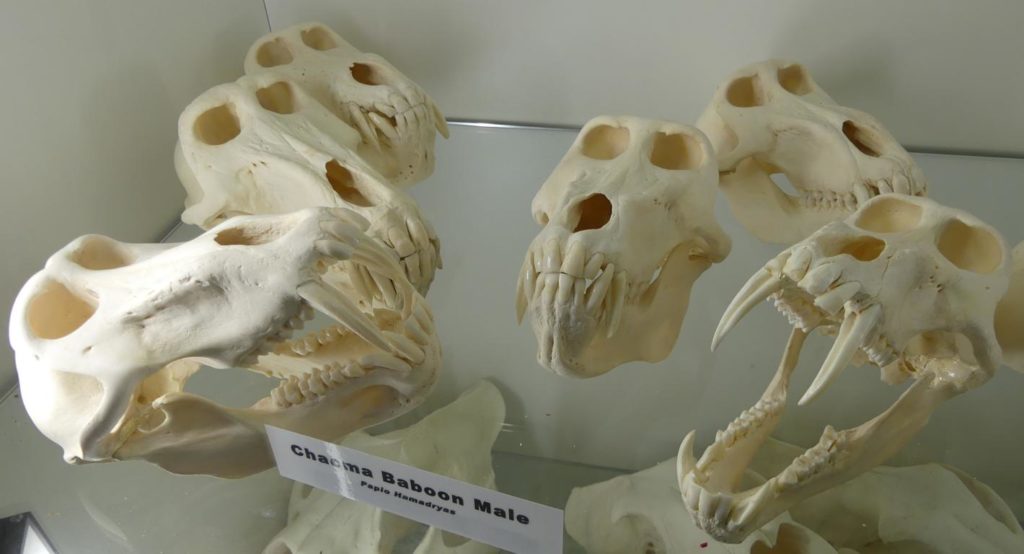
Recommended behaviors when dealing with baboons
There are many places in Africa, that have a problem with baboons. Not only Chacma but also all other species. One of the lodges near Parfuri in South Africa has hosted a troop of Chacma baboons for generations. To keep them wild and avoid becoming a pest, this lodge is posting a set of rules for their visitors, which is a valuable blueprint for our recommended behavior.
- Do not feed them.
- Do not carry food around baboons. Leave no food on outside tables unattended.
- Ensure your unit doors and windows are kept shut and locked.
- When viewing, always maintain a safe distance.
- Do not disturb them in their natural habitat.
- If you see baboons fighting, do not intervene.
- Should you be approached by a baboon, wave your arms, raise your voice, and move back slowly without turning your back on the baboon.
- Never throw objects at baboons.
These are simple rules, which cover the basics of human-baboon behavior. In practice, it is getting more complex and difficult. But whatever it is: don’t start a fight with them. They will counter-attack.
Lessons learned about the danger of Chacma baboons
- Chacma baboons are an intelligent and opportunistic genus of primates, that also got a group memory.
- They should never be fed or given the chance to obtain free food from humans.
- Feeding them means turning them into a pest, and acting highly aggressive.
- Whatever baboons eat, humans or other mammals can NOT always eat.
- They should never be disturbed in their natural habitat.
- If approached by a baboon in the wild, the same procedure as for big predators has to be applied.
- Never throw an object at baboons. A perceived attack on them will trigger a counterattack by them.
.



